FarmSafe Podcast
S3E1 | Welcome to Season 3!
Published November 8, 2023. Hosted by Libby Presnall.
Episode Summary
Welcome back to the third season of the FarmSafe podcast. To kick off this season, our Season 3 host, Libby Presnall, chats with center director Renée Anthony. They talk about upcoming projects at the Great Plains Center and what to expect from Season 3.
Episode Resources

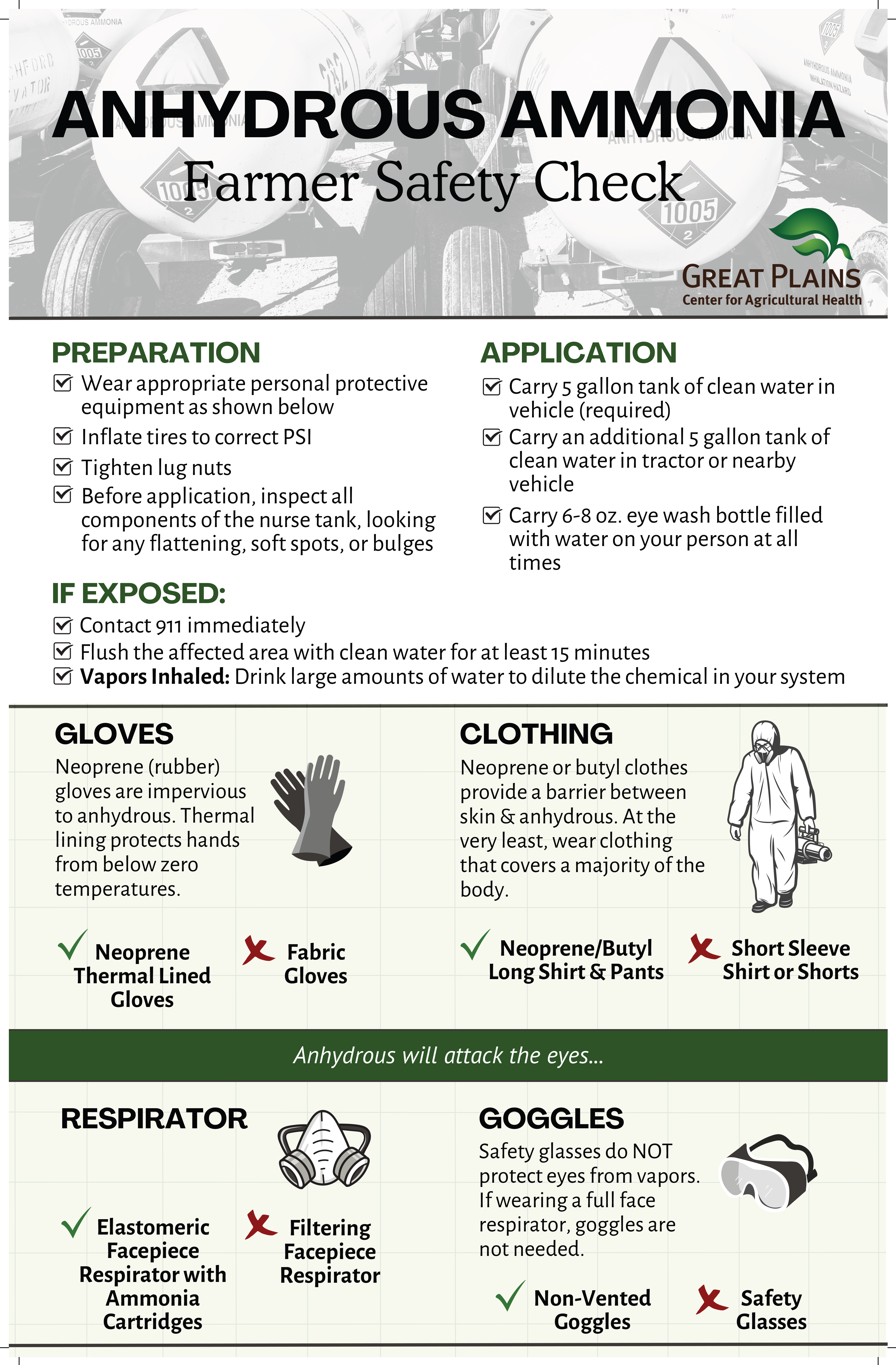
Anhydrous Ammonia Safety
While anhydrous ammonia is a common fertilizer, applied to Midwest fields in the late fall after harvest or early spring before planting, it can cause life threatening injuries. If inhaled, it can cause lung irritation, severe respiratory injuries, and can lead to death at higher concentrations. It is corrosive, and it will burn the eyes and skin on contact and can burn the lungs if inhaled.
The anhydrous form means that it is “without water”. Anhydrous ammonia aggressively seeks out moisture with anything it contacts. If it contacts your skin, eyes, or lungs, it will draw water out of tissue, dehydrating and destroying cells. It is extremely important to cover your skin and eyes when handling anhydrous ammonia and to wear respiratory protection during high-risk tasks where it could be inhaled (such as during tank filling, if escaping during a spill). It is also critical to have water to rinse hands and eyes if there is a spill or if it contacts skin: providing another source of water to both react with the ammonia and to wash it off your skin is critical.
Created by Libby Presnall
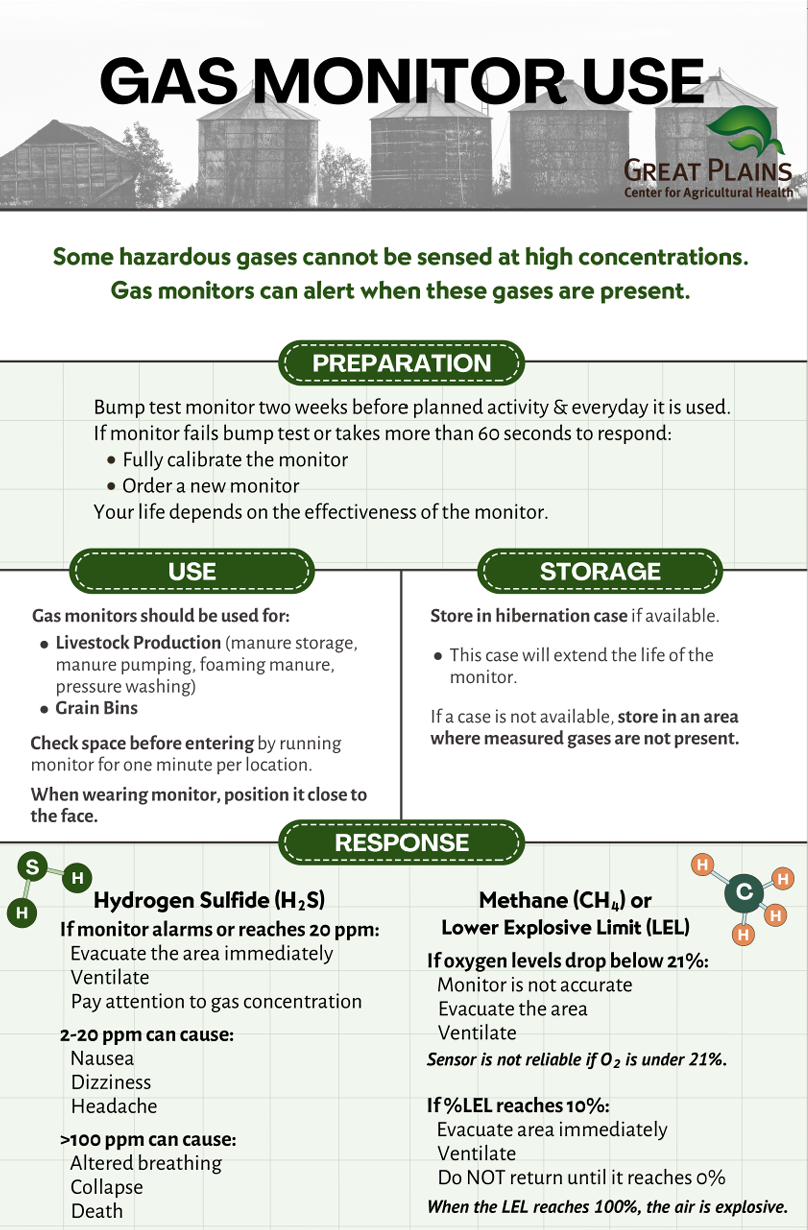
Gas Monitor Use
There are some operations on the farm that generate hazardous gases in high concentrations, and some of these exposures have caused farmers and family members to die. Simple, low-cost gas monitors are available to identify these unknown hazards and save a life. This poster highlights how to select, maintain, and use these monitors and summarizes what the concentrations mean.
Created by Libby Presnall
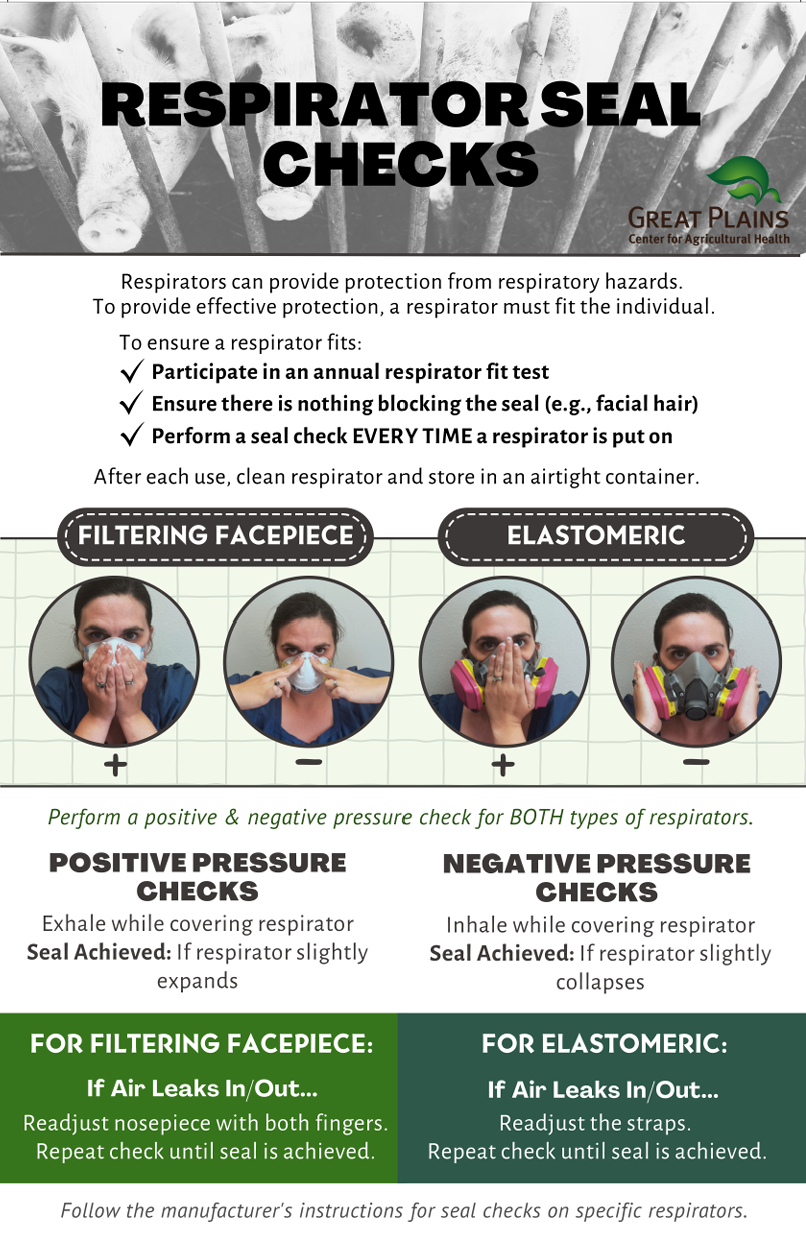
Respirator Seal Check
Many farming operations generate concentrations of dusts (“particles”) or gases that indicate respiratory protection should be worn. Any time you put on a respirator, you want to make sure it is sealed – otherwise, it is not preventing hazardous gases and particles from entering your lungs. The best way to make sure the respirator is sealed is to perform a seal check EVERY TIME you put a respirator on. This poster identifies the simple procedure to follow every time you put on a respirator. It shows how to do this with the filtering facepiece respirator (the “N95”) and with an elastomeric respirator.
Created by Libby Presnall
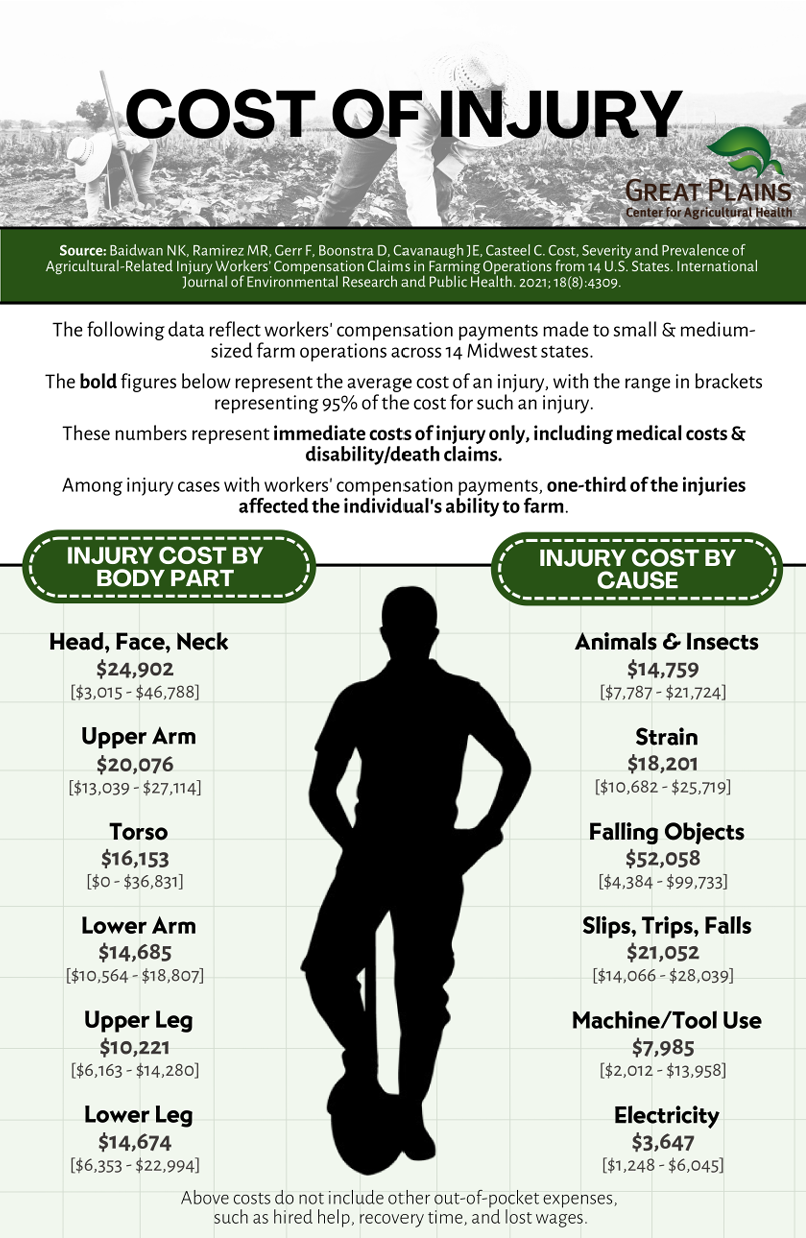
Cost of Injury
It is important to understand how much an “average” farming injury costs. The study team examined data from workers’ compensation claims that were filed by farmers who were injured on the job. Specifically, they looked at both medical costs and costs associated with lost time at work. Our poster focuses on how much it will cost for the medical bills for a farmer who is injured on the job. We present both the average cost across all injures, but also present the range of costs that cover 95% of the costs (there are a small percent that are above and below the range given). These were organized by both what body part was injured (torso is the most expensive) and by what caused the injury (animals cause most expensive injuries). These are provided to communicate real costs of injuries. Be advised that one third of all farmer injuries result in lost work time, which is not included in this information.
Created by Libby Presnall

Safely Extracting Stuck Vehicles
While we may have safely extracted vehicles stuck in the mud before, there is a chance that the next time you might not be as “lucky”. Some best practices include: making sure the tow vehicle is anticipating what would happen if things go wrong, selecting the right tow vehicle, ensuring chains/cables/straps and connectors (hooks, clips) are appropriately rated and connected securely. When extracting, anticipate what would happen if things go wrong, and use information on this poster to guide you through steps and where to stand when connections are no longer slack.
Created by Libby Presnall

Hearing Damage
How Loud Is Too Loud?
Once the risk of hearing loss is understood, people need to understand when to protect their hearing. When exposed to noise louder than 90 dB, hearing protection is needed. This poster identifies typical sound levels of a variety of equipment and indicates the “Safe Time” that you can be in that noise for a given day. Note that this presumes no noise exposures the rest of the workday. Since this is not likely to happen, protection can help reduce personal exposures to noise. This includes easily available hearing muffs and earplugs.
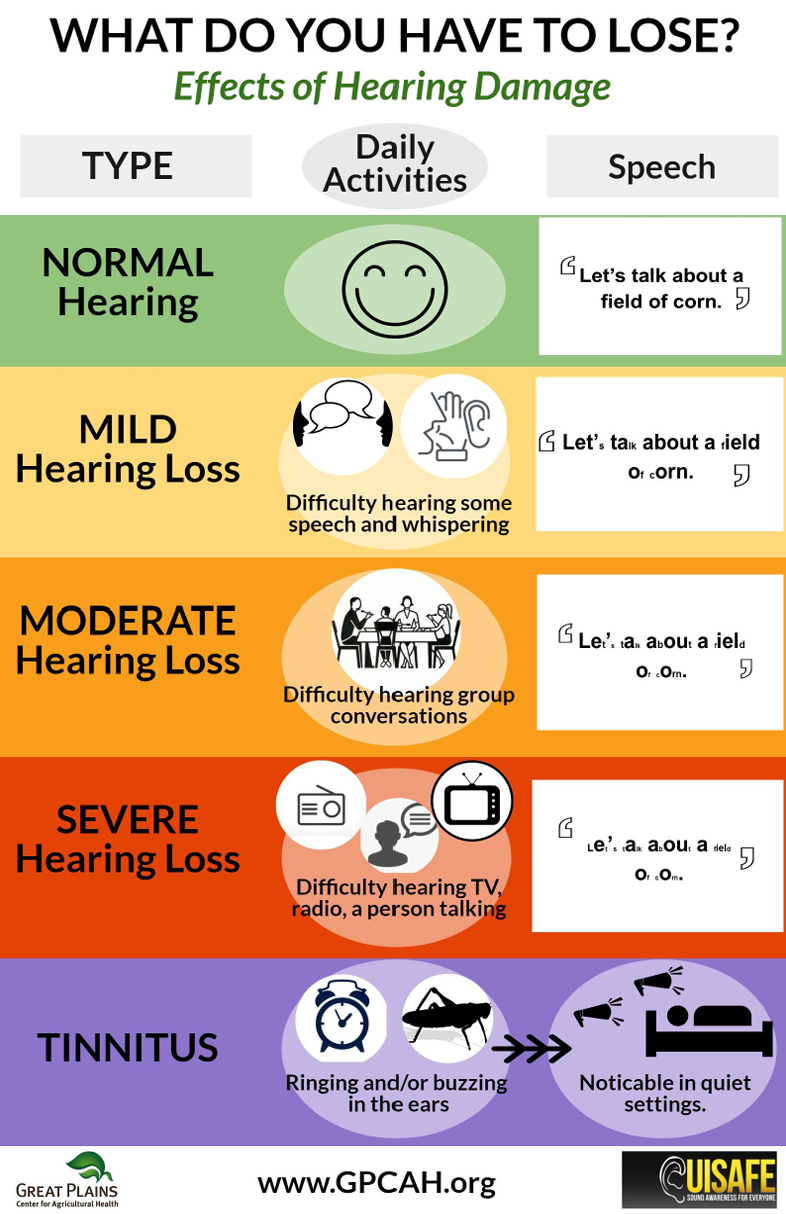
Hearing Damage
What Do You Have to Lose?
Farm workers suffer from impaired communication, reduced self-esteem, and disrupted intimacy, a result of noise-induced hearing loss. Most also experience tinnitus, a constant ringing or buzzing in the ears. Farm workers are exposed to excessive noise from: tractors, dryers, silage blowers, mowers, livestock, and chain saws, to name a few. Exact numbers are hard to pin down, but studies in 2000 estimate that 72% of farmers have hearing loss. Since hearing loss gradually develops over a working lifetime, early prevention will have great payoffs later in life. This poster explains how future hearing loss may affect common activities. The right side uses disappearing words to visually illustrate how changing of hearing loss affects the ability to communicate as the disease progresses.

How Farmers Get Hurt
As you know, there are many ways to get hurt on the farm. While you probably have stories about friends and family who have been injured, we have been looking across the Great Plains region to identify the big picture of farmer injuries.
Data from emergency room records and farmer fatality cases have been used to understand risk factors: How do farmers get hurt?
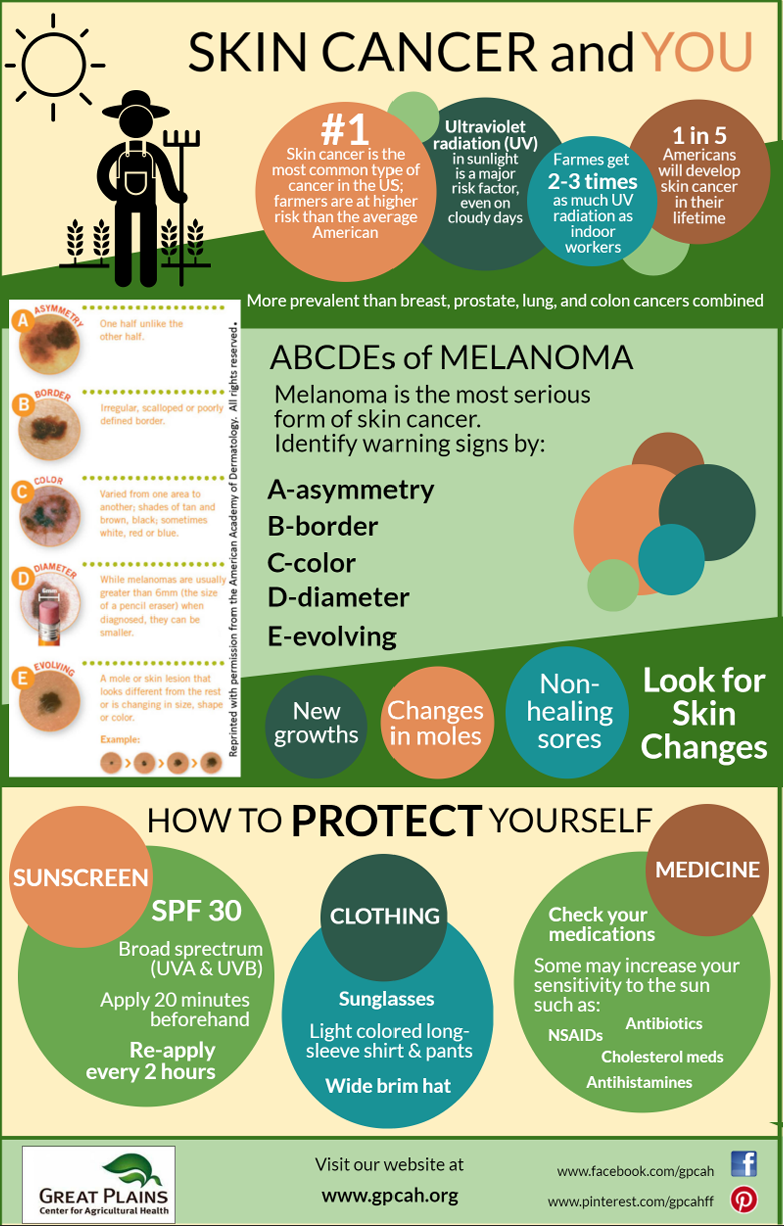
Skin Cancer and You
Farmers work outdoors and, by default, are at risk of developing skin cancer from ultraviolet light. Understanding the risk is important to motivate farmers to take simple precautionary actions.

Tractor Safety
How to Prevent Injuries
To protect farmers, discussions on how to prevent injuries on tractors is needed. The top five types of injuries identified as significant when evaluating databases of fatal and non-fatal injuries are identified. Specific recommendations to prevent falls, collisions, and entanglement in machines are identified. Specific recommendations to both prevent rollovers and to reduce the injuries if a rollover occurs are included.
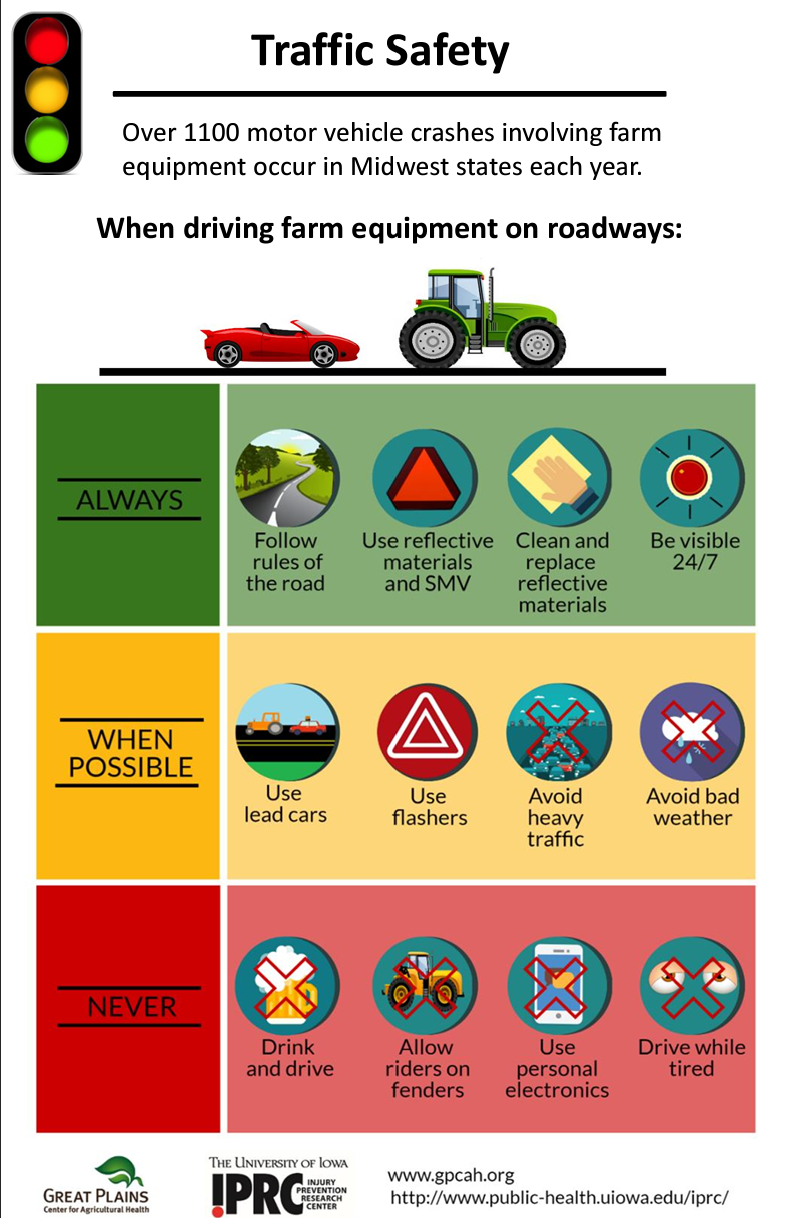
Traffic Safety
Crashes between farm and public vehicles on roadways pose a serious danger to farmers. This poster is intended to serve as reminders for those driving tractors on roadways but is also useful to have a conversation with other drivers during planting and harvesting seasons.

Tractor-Related Injuries
More Midwest farmers are injured on tractors than by any other hazard on the farm. Tractor rollovers cause 33% of all farmer fatalities, highlighting the importance of using rollover protection. However, we recommend understanding that many other types of non-fatal injuries occur when working on and around tractors
Data from emergency room records were used to identify leading sources and events associated with how farmers are hurt on tractors. This poster provides information on how Midwest farmers and their families have been hurt when working on and near tractors.
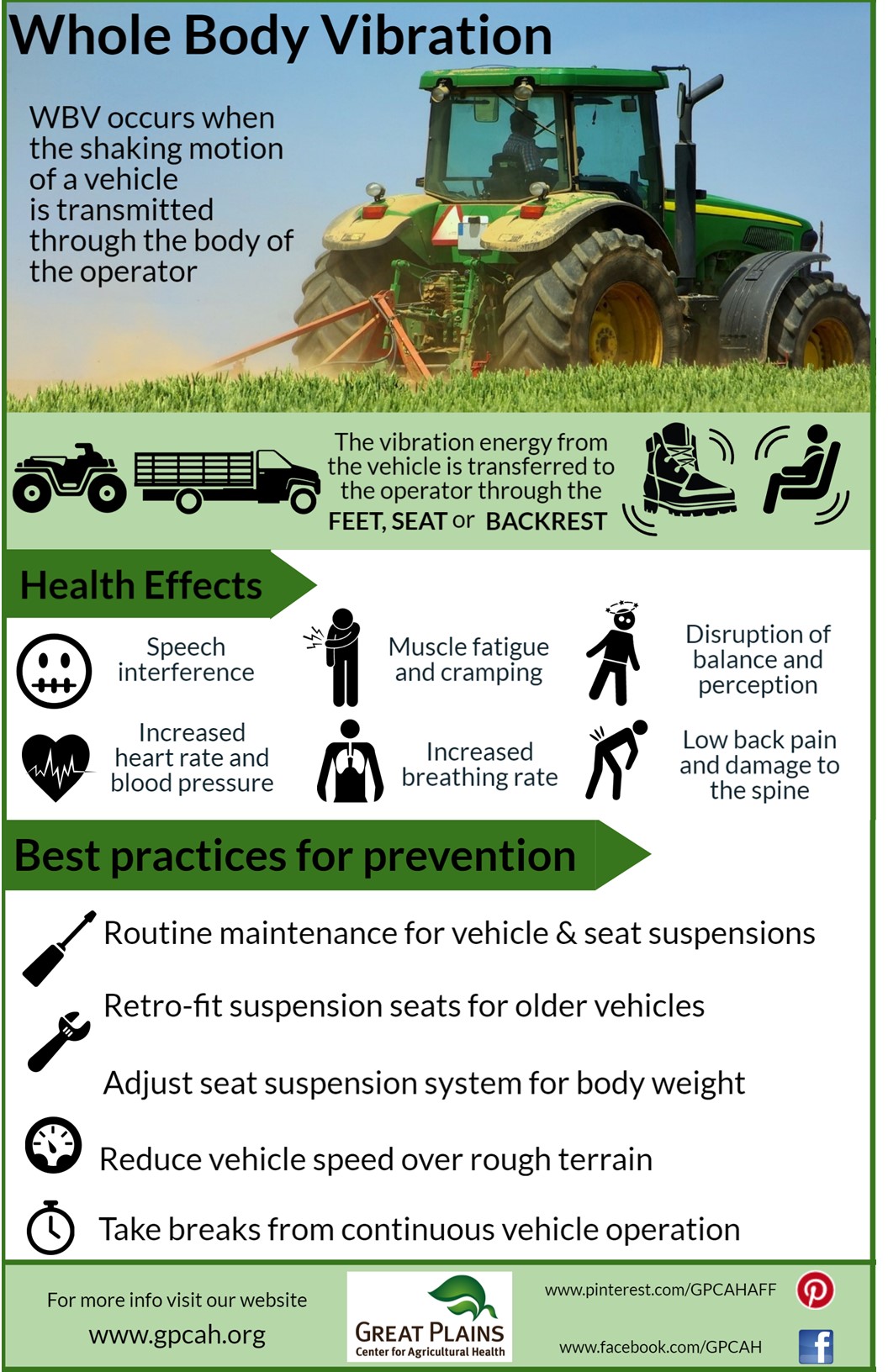
Whole-Body Vibration
Farmers report musculoskeletal pain, even more so than other industries. Farmers report pain in the back, shoulder, arm, hand, and legs throughout their working years. A significant risk factor to back pain is exposure to whole body vibration (WBV). This poster identifies what WBV is, known health effects, and prevention recommendations. Exposures to WBV can exceed 8-hour recommended limits in as short as 2 hours, depending on the type and age of vehicle being driven. Vibration is lower when pulling a combine, which is heavy and reduces vibration. Farmers operating small vehicles (skid steer loaders) and older vehicles have increased risk of developing back pain. We have also identified that while new tractors have improved vibration control seats, running these at faster speeds may result in the same vibration exposures as running older tractors at slower speeds. How you operate your equipment affects your risk of exposure to WBV and your risk of developing back pain.
